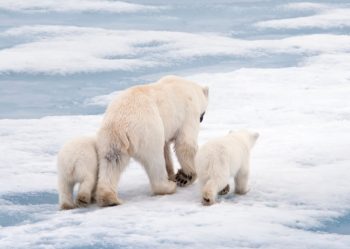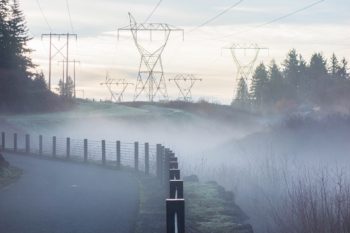
The sensational language was allegedly based on a new research report, Canada’s Oceans Now: Arctic Ecosystems, 2019, released on Earth Day last week by Bernadette Jordan, federal Minister of Fisheries and Oceans.
The report received little attention outside of a Canadian Press story that tended to do what most media stories do when appraising material linked to climate change. Small research factoids are routinely morphed into asteroids of climate destruction.
For example, the news report on the disappearing frozen North claimed that Arctic Ocean waters are “33 percent less salty than in 2003 and about 30 percent more acidic — enough to dissolve the shells of some small mollusks.”
Sounds bad. But it turns out that the body of water that is 33 percent less salty is part of the Beaufort Gyre where water circulates in a giant spin cycle and salt levels fluctuate. For many years it moves clockwise and for many years it moves counterclockwise.
Andrea Niemi, a federal research scientist and a lead author of the new Arctic Ecosystems report, said in an interview the low-salt reference “does not apply to the entire Canadian Arctic.”
Nor is it likely permanent. As the water spins in one direction over hundreds of kilometers, spurred by atmospheric shifts, fresh water from rivers and melting ice dilutes the salt content.
At some point, the great gyre is expected to change directions and the salt content will again increase.
Will the salt content return to what it was in 2003 is not known, but it is clear that the 33 percent decline in Arctic Ocean salinity has not happened and therefore is not a sign of imminent Arctic desalination.
Another aspect of the news report suggested that melting ice is interfering with the molting cycle of ringed seals, making them open to polar bear attacks.
Niemi said the ringed seal risk is based on a case study in Hudson Bay and does not apply across the Arctic.
As for polar bears, Niemi notes that while polar bear populations are struggling in Hudson Bay, “in other parts of the Canadian Arctic they are doing OK.”
Then there’s the attack of the Pacific salmon. Due to warming, warmer-water species are moving in, including Pacific salmon, to the point where fishing communities are hauling in salmon instead of char.
A large salmon influx occurred in 2019. It seems unlikely, however, that the arrival of salmon as a food source constitutes a climate crisis for the local population.
The same question can be asked about much of the changes taking place in Canada’s Arctic. Change appears to be happening as ice melts.
But does the change recorded so far amount to turning the Arctic upside down? Do the changes signal a looming catastrophe?
Niemi said during my interview that the report was not intended to be a forecasting document.
Instead, through 190 pages based on the work of more than 50 federal researchers, the report cautiously portrays the vast Arctic region of Canada as something of an unknown planet ready to be discovered.
The 30-page public summary of the report, Canada’s Oceans New: Arctic Ecosystems, repeatedly notes that scientific understanding of the region is limited and “filled with major gaps” that need to be filled.
Rather than portray the Canadian Arctic as a collapsing ecosystem facing climate disaster and species extinction, the report serves as a basis for serious science and social research into a dynamic, non-static, ever-changing environment.
“The Arctic, on a global scale, is changing but the type and speed of changes are not the same in all locations. Understanding the state of Canadian Arctic ecosystems is necessary to explain and manage present conditions and future changes. The state of an ecosystem describes conditions in a specific location — both the normal conditions and how they change over time.”
The public report is not an alarmist call for action to save a collapsing frozen, pristine environmental stereotype. The fact is that little is known about the Canadian Arctic and there is much to learn.
“There has been little long-term, sustained scientific monitoring of ocean conditions and species in Canada’s Arctic. As a result, scientific evidence is limited to identify, explain, and predict ecosystem changes across the Canadian Arctic.”
The report is a welcome cool-headed antidote to the sensational portrayal of the Arctic as a melting disaster that’s killing polar bears.
As Niemi put it during our interview, “the Arctic is characterized as being very different from year to year. Those differences are normal. I think that’s something important in scientific and Inuit knowledge.”
Today, a new element is having an impact. The Arctic, she adds, is moving away from “normal variation” toward a new normal that is driven by “climate variability as well as climate change.”
In other words, the actual federal report on Canada’s Arctic suggests change is underway. The only element that’s upside down is the sensational language in the media and elsewhere that implies the Arctic is heading into some kind of oblivion.
A changing Canadian Arctic might even be good.
Read more at Financial Post

















Wait, Canadian Arctic is constantly changing!?!? Can’t have that! We must ruin our economy so that we can allegedly stabilize it at some randomly designated normal.